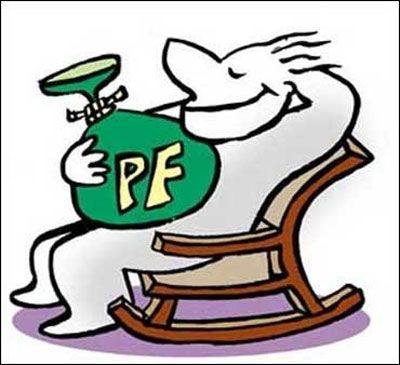EPF has traditionally been the only tool for Indians, especially the salaried class, to save for their retirement corpus.
 The Employees’ Provident Fund (EPF) has traditionally been the only tool for most Indians, especially the salaried class, to save for their retirement corpus.
The Employees’ Provident Fund (EPF) has traditionally been the only tool for most Indians, especially the salaried class, to save for their retirement corpus.
This year’s Union Budget had proposed to tax EPF returns, and make it compulsory to buy an annuity with a part of the corpus.
The decision was later withdrawn, after opposition from various quarters.
The government has now proposed to pay interest on inoperative accounts, almost 60 per cent of the total number.
When employees change jobs, they usually either withdraw their EPF accounts or simply ignore these, if the balance is not much.
Also, the income tax applicable on withdrawal before five years could be a reason why employees don’t withdraw the money.
Now, however, it is possible to access EPF accounts online and also transfer it when you change jobs.
Besides, last month, the government changed the EPF guidelines to ban withdrawing the corpus before 58 years.
Let us see how EPF works:
Applicable to:
Legally, any employee who has a monthly salary up to Rs 15,000 but most Indian companies offer it to all employees as part of the salary package. If you have a higher salary, you can opt out of it at the beginning of your career, if your employer permits. Once you opt for EPF, you cannot opt out of it.
Contribution:
The mandatory contribution is 12 per cent of an employee’s basic salary, credited to the employee’s account. The employer contributes the same amount. Of the latter, 3.7 per cent (of that 12 per cent) goes towards the provident fund component; the other 8.33 per cent goes towards pension.
Opening an account:
Your employer opens the account. It is possible to operate it online with a Universal Account Number. You can check your account balance and transfer your account while changing jobs.
Interest:
EPF is a defined benefit scheme, where the interest rate is set every financial year. For 2015-16, the rate is 8.8 per cent.
Payment to dormant account:
These are the ones where there's been no contribution for three years.
Of the 150 million EPF accounts, 92.3 mn are dormant or inoperative. Interest will be paid on these accounts from April onwards, the government said.
In the new rules, interest will also be paid for three years after members reach 58 years.
This will apply to those who choose not to withdraw it after retirement.
They can thus earn interest till 61 years of age.
Accounts will become inoperative only if the employee has settled abroad permanently and fails to withdraw the balance in a period of three years. In the case of a subscriber's death, interest on the savings will be credited for three years after the death.
Withdrawal:
If you have been out of work for two months or for major life events such as marriage of self or child, education, buying a house, medical emergency, etc, you can withdraw your EPF.
In February, the EPF body changed the rules to allow withdrawal of only the employee’s contribution, not the employer’s.
The latter cannot be touched till the age of 58 years.
Tax:
There is no tax at the time of investment, interest accrual or withdrawal.
At the time of retirement, you can withdraw the entire corpus.











